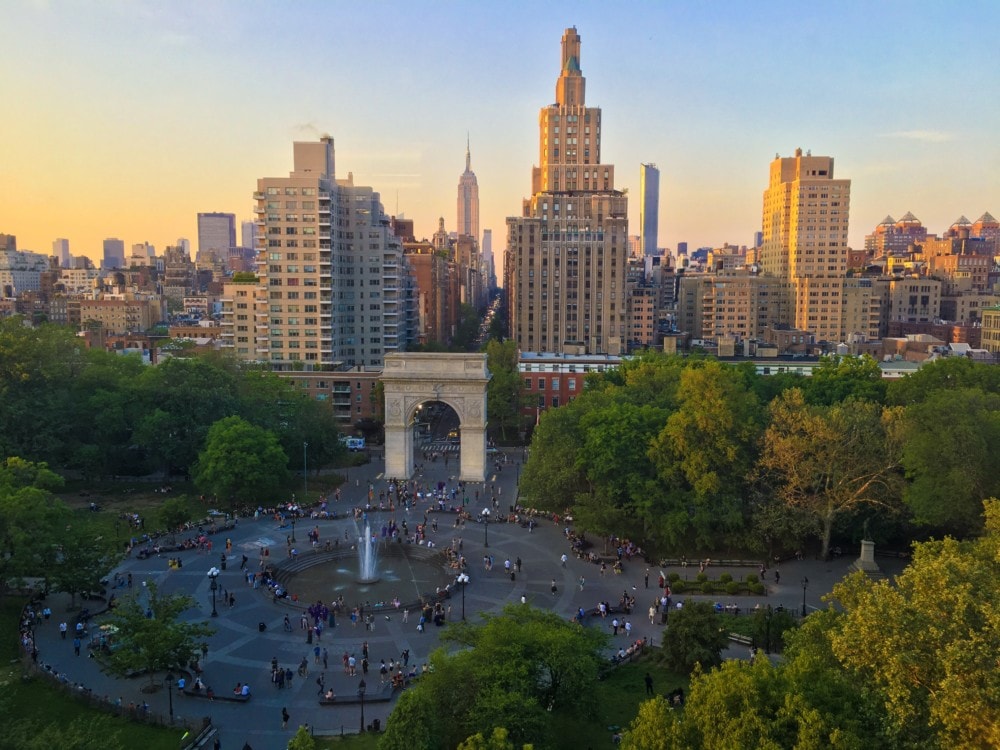Table of Contents Show
Greenwich Village has seen its fair share of architectural styles since the first structures were erected all the way back in the late 1700s. Now, two centuries later, the New York City neighborhood lovingly referred to as “the Village” is home to an eclectic collection of historic architecture that spans the years. Here are five types of homes you can expect to find while walking the streets of Greenwich Village.
Table of Contents
Second EmpireSecond Empire
Taking after its late Victorian roots, Second Empire architecture resembles the Mansard architectural style made famous in the late 1800s. A perfect example of this style of architecture in Greenwich Village is Perry Street, which is a tree-shaded street in the heart of the Village. Perry Street is lined with numerous Second Empire brownstones complete with double-pitched Mansard roofs and beautiful dormer windows. The architectural style is also known for molded cornices that accent the roofline and elongated first-story windows with elaborate borders.
Georgian RevivalGeorgian Revival
Image via Flickr by David Goehring
The Georgian Revival style is found throughout the streets of Greenwich Village. 27 Barrow St. is an excellent example of this style of architecture, which was popularized in the late 1700s as an offshoot of Italian Renaissance architecture from the 1500s. Georgian Revival architecture is known for its symmetry and centered appearance, which is evident with the home on 27 Barrow St. The building’s façade has a central entrance and vertically aligned windows. Georgian Revival is also known for its hipped roofs and raised foundations, which the home also has.
Federal StyleFederal Style
Image via Flickr by lin padgham
Arguably one of the most famous architectural styles in the Village is Federal style, which is historically preserved on almost every street throughout the famous New York City neighborhood. The two-story homes on Grove Street show the Federal style in all its glory, with original brick façades dating back to the 1820s. The federal-style architecture was a popular style in the late 1700s and early 1800s and takes after European trends of the same period. Typical features of Federal-style architecture include small, semicircular entry porches, louvered shutters, and low-hanging hipped roofs.
Greek RevivalGreek Revival
Image via Flickr by edenpictures
Greek Revival architecture in Greenwich Village was usually built for the social elite of the time, so the architectural style isn’t as widespread as the rest of the styles mentioned. Remaining examples of Greek Revival style houses of the mid-1800s are located on Washington Square North near Fifth Avenue. The defining features of the Greek Revival architectural style are rounded columns that take after Doric, Ionic, and Corinthian design, double-hung sash windows, and entryways surrounded by sidelights and transoms.
ItalianateItalianate
Image via Flickr by edenpictures
Centrally located in the Village is a group of townhouses at St. Luke’s Place, which are perfect examples of Italianate architecture. Popularized in the mid-1800s, Italianate architecture takes after the Picturesque movement, which was a dominant style in Europe a century prior.
The Italianate style features low-pitched roofs with overhanging eaves, narrow windows, and paired doorways complete with centered porches and stucco siding. The next time you’re strolling through Greenwich Village, stay on the lookout for the architectural styles described above.

